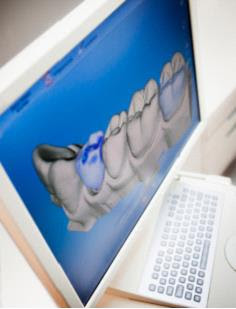This article explains how the “All-On-4™” dental implant protocol makes it possible for patients to go from being edentulous (toothless) to having new teeth in just one day!
There are currently tens of millions of people in the United States who are living without most or all of their original teeth. Countless more are facing an immediate future of a state referred to as “edentulism” - not having a single natural tooth left in your mouth. The most common cause of tooth loss is tooth decay and periodontitis: an advanced bacterial infection of the gums, also known as gum disease.
Removable dentures have been the preferred method of teeth replacement for millions of Americans because, for many years, the alternative approach using dental implants would take as many as 12 or even 18 months in and out of surgery. The associated costs of repeat procedures would also work out to be exorbitantly high. This was until the innovation of a new dental implant protocol designed to give patients new teeth in a day.
Where’s the catch? There isn’t one!
How the “All-On-4™” Works

The picture above illustrates, in concept, how the “All-On-4™” dental implant technique works. Through the precise and strategic placement of four dental implants, qualified dental healthcare specialists can provide patients with new teeth in the form of a prosthetic dental bridge. Instead of replacing tooth by tooth in a series of dental implant surgeries, which need to be spread out over the course of a year to a year-and-a-half, this entire procedure can be done in just one day, in a single appointment.
That’s right; the “All-On-4™” can give candidates new teeth in a day.
How the protocol manages this is:
- Through the use of only four dental implants in order to give patients new teeth. This can easily be achieved in just one procedure.
- Through the use of 3-D Cone Beam CT scans and sophisticated computer software to visualize the patient’s unique case and meticulously plan treatment ahead of surgery.
- The avoidance of bone grafting surgery through the strategic choice of implant sites in regions of the jaw that are naturally more resistant to atrophy and so contain sufficient bone volume to support implants. Bone grafting would otherwise require several months in recovery before a patient can even receive new teeth.
 These key factors, coupled with the incredible advancements that have been made in the field of fixed oral rehabilitation and dental implant surgery, and the skill and experience of the oral surgeons and prosthodontists who make it happen, explain how it’s possible for patients to get new teeth in a day. Even better, owing to the fewer number of implants and surgeries and the fact that the “All-On-4™” seldom requires bone grafting beforehand, the cost of new teeth is also greatly reduced!
These key factors, coupled with the incredible advancements that have been made in the field of fixed oral rehabilitation and dental implant surgery, and the skill and experience of the oral surgeons and prosthodontists who make it happen, explain how it’s possible for patients to get new teeth in a day. Even better, owing to the fewer number of implants and surgeries and the fact that the “All-On-4™” seldom requires bone grafting beforehand, the cost of new teeth is also greatly reduced!
A Final Note on the “All-On-4™”
The “All-On-4™” protocol is regarded as a “breakthrough” in the field of dental implantology for many reasons, but perhaps most especially because it can give patients new teeth in just one day. With only one surgery needed and as little as a few days spent in recovery, this amazing procedure is helping to rehabilitate America’s millions of edentulous and near-edentulous citizens. And at a cost that is very affordable!



